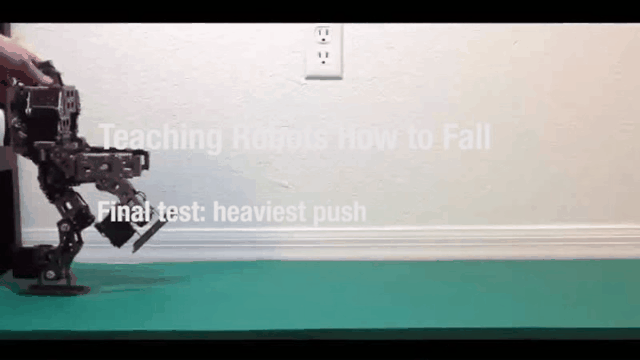Humans love watching robots fall, whether for levity or the fleeting satisfaction of knowing we can do something better than machines (when sober, at least). But now at Georgia Tech, engineers are teaching robots to fall more gracefully.
Over the past few years, we’ve seen humanoid robots evolve incredibly quickly, mastering climbing, carrying, and even teaching itself new tasks. But one area of human physiology that seems to stump machines most is our innate reflexes — for example, human hands have the remarkable and unconscious ability to adapt and improvise, a skill that robotic arms have had an extremely tough time learning.
Or take falling. When a human falls, it often naturally adopts poses designed to shield our most important parts, like our skulls and internal organs. Cats are even better at this — and that’s exactly why Georgia Tech Professor Karen Liu and a PhD candidate named Sehoon Ha have spent the last year studying how mammalian brains calculate the angle and rate of a fall to make the impact less dangerous for our bodies.
That work informed an algorithm, presented by the duo at the IEEE International Conference on Intelligent Robots and Systems recently, that helps a robotic “brain” figure out the angle and speed at which it’s falling — and adapts to help it stay safe. “From previous work, we knew a robot had the computational know-how to achieve a softer landing, but it didn’t have the hardware to move quickly enough like a cat,” says Liu in a release about the research.

So instead of trying to build an algorithm that adapted the hardware instantly, Liu explains how they built one to recommend movements that slow the fall down, not stop it completely. That’s good enough to prevent the worst damage. When they shove the humanoid bot in the video above, the algorithm takes into account where it was pushed, and with how many hands, to calculate where and how hard it will fall to the ground.
The research is just the next step in helping robots develop the natural reflexes of the human body. While it’s unsettling, at least it also indulges the world’s increasingly popular pastime of messing with our hapless robot friends.
[Georgia Tech; h/t Motherboard]
